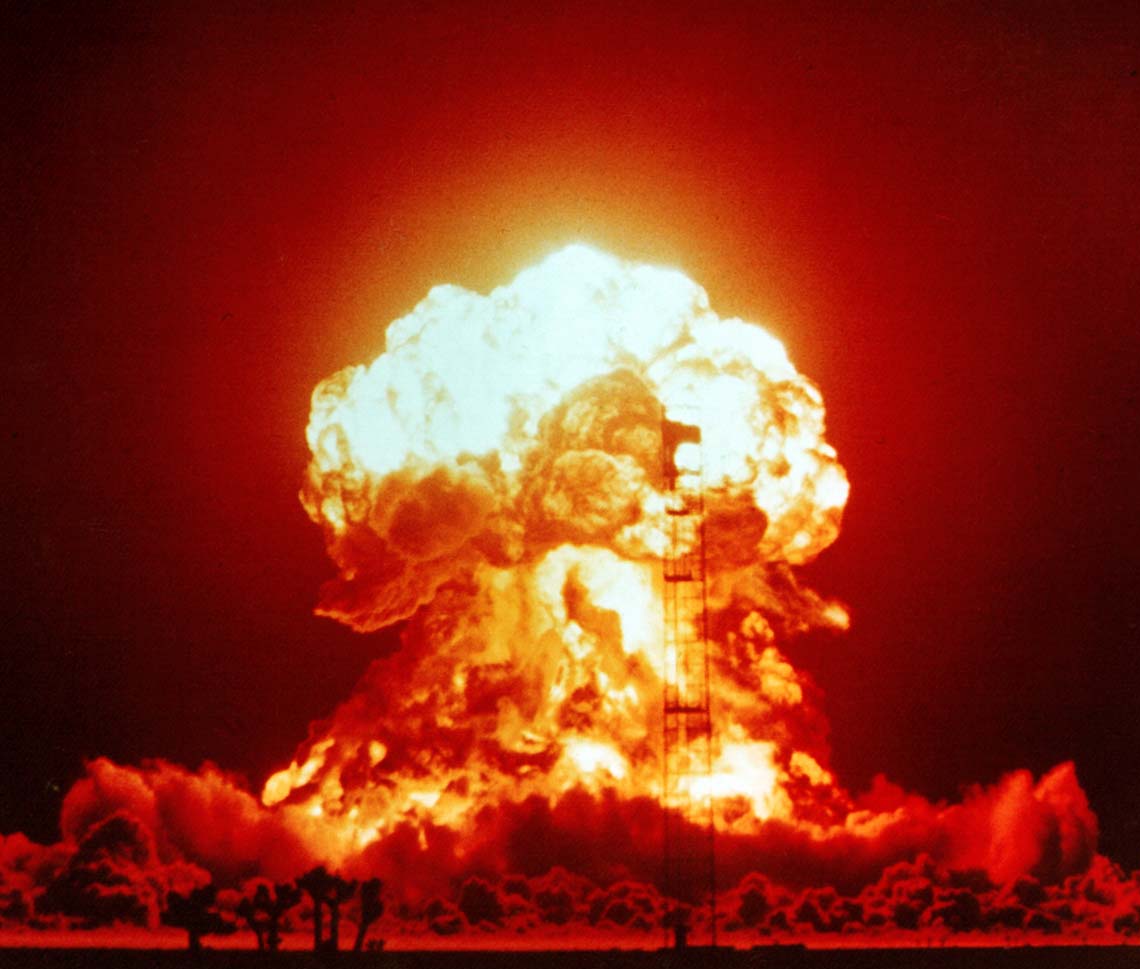So helium is a limited resource. Okay gotcha. So why not take two hydrogen atoms. Take their protons and neutrons. And just fucking start squeezing them together until you get helium?
And I don’t mean in the same way you get H2. Those are still separate from each other.
Do I look like a fucking star?
You’re my star

This comment was the most wholesome thing I saw all week. Even though it wasn’t aimed at me, I deeply appreciate it! ☺️
i thought that film with Bradley Cooper and Lady Gaga was going to be about making lots of helium
“Oshi no Ko”
Because you need the concentrated gravity of the sun to do this. Otherwise the electromagnetic force between the positively charged protons will keep them from sticking together.
Good news: This actually “creates” energy because helium is slightly lighter than two hydrogens. Look at the sun, that’s how it sends us all the nice sunshine.
Bad news: You need more energy to actually push them together.
But we’re trying to get there. That’s what all the fusion reactors are supposed to do. We’ll probably get it to work in about 50 years.
Just a tiny bit of context: we are getting fusion reactors to work in fifty years since 1950.
Powered flight was fifty years away from about the ninth century onward. Until 1903. After that it was trivial.
sixty years after that we had escaped the atmosphere itself and the Moon was within reach
Because of funding cuts, so yeah bring the cash back and it will probably be even before 50 years.
Is the LHC trying to do this? I know it smashes atoms together at high speeds, is this us trying to “squeeze” the atoms together like the sun does? Or is the LHC is completely unrelated to OP’s question?
Not really, but another massive international project, ITER, is trying to do this. Its timeline is measured in decades if not the better part of a century.
I’m kinda pulling this out of my ass so I’d appreciate if someone can deny/confirm this.
I believe the LHC smashes particles to destroy them, to detect particles smaller than neutrons/protons/electrons, such as quarks.
Fun fact: pretty much all the helium we have access to comes from alpha decay of heavier atoms, such as natural uranium. An alpha radiation particle is just a “naked” and fast moving helium nucleus. (Missing the electrons.) When this happens deep in the earth, it quickly runs into something, stops moving, and picks up some electrons to make it helium, which can accumulate in certain rocks.
Takes stupid amounts of energy. That’s why we get so much energy from nuclear power.
We get the energy from fission. To put two hydrogens together to turn it into one helium is the very definition of fusion.
Separate but related: among the many mind-blowing astronomical discoveries of the past decade or two, kilonovas are in the short list for most spectacular.
Imagine two tiny neutron stars plowing into each other, all those densely packed neutrons suddenly and with great force being clumped together into super heavy elements, creating a spiral spray of silver, gold, platinum, uranium nuclei, but just the neutrons.
With time, some of these neutrons decay into protons, or absorb whatever hydrogen atoms they encounter along their path - a proton and an electron - along with whatever random free electrons may also be around, floating freely in space.
Eventually you’ll get the full atoms. Some of that bounty got caught in the gravity well of the gas and dust nebula that collapsed into our solar system.
And that’s how the universe created the silver, gold, titanium, uranium, etc, that is in our planet today.I wasn’t going to go into all the details about fusion just convey the point that it’s difficult. Maybe I should have said difficult to control.
Congratulations, you’ve invented fusion.
He’s the savior of our planet!
In addition to everything else mentioned, in your scenario, you would also need to pull 2 neutrons from somewhere. A helium nucleus has 2 protons and 2 neutrons, but each H nucleus (generally) is just 1 proton. The 2 neutrons are critical in holding nuclei together.
You need neutrons? I got a guy, I can get you 2 neutrons here in an attosecond
Tell Jimmy Quarks I send the following message:
When you came, you said to me as follows: ‘I will give HeyThisIsntTheYMCA (when he comes) fine quality neutrons.’ You left then but you did not do what you promised me. You put neutrons which were not good before my messenger (Pete Two-Slippers) and said: ‘If you want to take them, take them; if you do not want to take them, go away!’ What do you take me for, that you treat somebody like me with such contempt?
Because atoms have feelings and if you force them together they might just blow up and nobody wants to deal with the fallout.
Because it takes a real lot of energy. Like a real lot of it. We’re currently trying to do that in a controlled form in ITER which is still getting built
Others have already mentioned that this is fusion. But the fact that any nucleus with more than two protons exists at all is interesting. E=mc^2 is a well known equation, but not many people understand it’s practical application. If you shove 2 protons and 2 neutrons together to form Helium, the resulting nucleus weighs less than it’s constituent pieces. Where’d the lost mass go? It turned into binding energy. The energy necessary to force two positively charged protons to hang out together without flying apart. And this is part of the energy input necessary to fusion things. Conversely, when we break Uranium apart we get a lot of energy. For the same reasons. Which is how current fission reactors work.
If you really find this stuff interesting do some googling related to fission, fusion, mass defect, and binding energy.
Not the really the “same reason”. Unless that reason is the in both cases, the binding energy per nucleon is increasing. So, for interested people, also look at the binding energy per nucleon curve. Fe is boring…but stable.
You iust described nuclear fusion. We haven’t managed to figure out how to do it in a cost effective way yet.
Technically, we only kinda just did. We’re experimenting with it currently on a very small scale, and will be scaling it up over the next 10 to 20 years. It’s very exciting time for nuclear fusion!
“Squeezing” doing a lot of heavy lifti–er, squeezing
Its just hard for us. Not hard at all for a sun, which makes up a far greater proportion of observable matter than what exists at ‘our’ temperature/ gravity. Even then, gasses make up an even larger proportion of observable matter.
So a counter way of asking the same question might be “Why is it so hard to not undergo nuclear fusion?” or “Why is it so hard to not be gas?”. Even further, the observable stuff is practically nothing compared to the relatively unobservable stuff. So maybe the question could be “Why is it so hard to not be dark matter/ energy?”
Just something to consider in the framing of your question Fat Tony, is that you are asking it from your perspective, and there are assumptions baked into the view you have of the universe because of your position. If you were a neutrino, or a star, or some gas in the milky way, you might consider things very differently
Atoms in a stable state are very strong and it would take incredible amounts of energy to pull them apart
Because of this:

This can be done, it’s called nuclear fusion and the sun does it constantly. The practical limitation is, largely, overcoming the electrostatic force.
Basically, because the atoms are similarly charged, squeezing them together is like trying to push together the North sides of two magnets: they repel each other. It takes a massive amount of energy to squeeze them together hard enough to overcome that repulsion, fortunately the sun has enough energy to do this fairly easily. It is much more difficult for humans to do.
… I feel like you just perfectly eli5 nuclear fusion. I’m using this example next time it comes up.
I can tell you know this, I’m just tacking it on for those who don’t:
Why do the nuclei stick together at all, once you’ve pushed them together? Because the nuclear force, which is attractive instead of repulsive, is just a little bit stronger. OK, so why then doesn’t the nuclear force just pull all atoms together? Because it is short range, and only works once the nuclei are “touching.”
I know that much, but actually how can a force be stronger but short range?
So does the sun just have huge amounts of helium? Where is it getting all that helium? Can we have some
It’s making it, from the tons of hydrogen it has in the fusion process. The energy and the reason stars even do this is because all of that mass that close together spontaneously does that; starts fusing.
We can’t have any, because a star will use up all the hydrogen to make helium, then start using all of the helium to make carbon and oxygen. Then start to make…
This is overly simplified and it varies from star to star (the more massive the star, the longer it churns through “making” elements into more “complex” elements) until its core is all iron, at which point fusion becomes a net negative.
From there other things can happen like novae. All throughout this life process though, that “elemental conversion” is happening faster on the outside as opposed to the core, and stellar winds do blow off heavier elements that enrich the interstellar medium.
We need a shovel that can plunge into the sun’s core if we want its helium, TL;DR.
Our sun will stop at carbon, then hang around until it either becomes a brown dwarf, or flies through enough matter to his the Chandrasekhar limit, then KABOOM!














